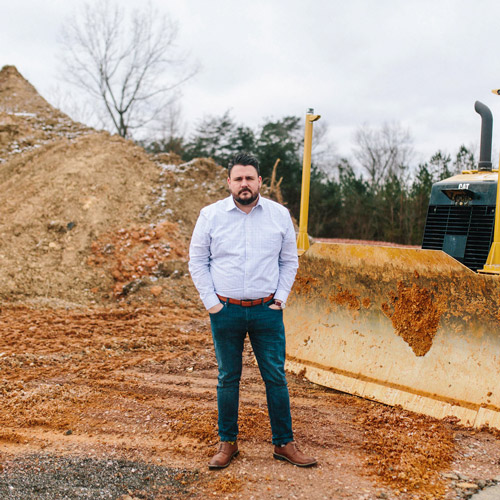
Bob Palmer made a wise decision straight out of college that he says changed the course of his career in retail construction for the better: he actually got to know construction. While he would eventually play a role in the massive Toys “R” Us expansion of the 1990s as part of an innovative and level-setting construction group, the now-vice president of construction for Rite Aid says that learning the ropes from the general contractor role early on shaped the next 30 years of his career and introduced him to a side of the business that far too many in his field may not experience. As Palmer faces continually evolving challenges in pharmacy construction for Rite Aid, he’s quick to remind himself that no matter the obstacle, it still comes down to the actual nuts and bolts: “Construction is construction,” he says.
His move to Rite Aid in 2014 came at a very interesting time for both him and the company. For Palmer, he had just spent the past 22 years as an integral part of the construction group for one of the broadest big box franchise “category killer” expansions in American history. Palmer was building a consistent 45 stores per year for Toys “R” Us at the company’s 1990s peak. “We had tight schedules and a lot of pressure, and it really helped give me a unique perspective on how to put up buildings quickly and efficiently,” Palmer says. Learning to adapt to new materials and methods rapidly was essential, and that competency has proven valuable since coming to Rite Aid.
Palmer says that the Toys “R” Us construction teams’ sophisticated operation methods also helped him learn about each individual trade when building a new store. For a time, Toys “R” Us hired each subcontractor individually and acted as its own construction manager. The Toys team was best-in-class and paved the way for other retailer construction groups that became popular in the early 2000s, such as Bed, Bath, and Beyond, Barnes & Noble, and Footlocker.
But construction projects began to slow as retailers such as Walmart and Target amassed more and more of the market share, so Palmer decided to make a change. In preparing for the job at Rite Aid, Palmer was able to leverage his résumé effectively. “You can look at what my teams have done and look at the cost savings and number of stores and all of the metrics,” he says. “But it’s easier to explain that I just love to build.”
Palmer’s transition to Rite Aid couldn’t have come at a more defining time for the company brand. After a nearly two-year deal and an aborted purchase of the company outright, Rite Aid instead sold 1,932 of its stores to competitor Walgreens. This left Rite Aid with a smaller footprint but a much more profitable outlook. The adjustment to becoming a more regionalized brand has provided Palmer and his construction team with a framework that stresses efficiency and flexibility.
Over the past three and a half years, Palmer and the construction team have worked to develop multiple store prototypes to give the real estate team more tools in their toolbox, Palmer says. As real estate prices continue to climb and regulations continue to grow and evolve, retailers worldwide are being forced to find ways to minimize build and occupancy costs. “You can’t just tell your team to find the property and build it anymore,”
Palmer says.
Palmer’s extensive experience in updating building practices to fit the times is just what Rite Aid is betting on. “The talents of my team help us be creative in how can we put together the cheapest occupancy for Rite Aid,” Palmer says. “It’s exciting and frustrating; everything is expensive,” he laughs. In some cases, creating savings might mean using existing structures instead of putting up new ones; in others, it might mean using a lower-cost property a little further down the block. “I think the days of paying the huge dollars for Main and Main properties are going away,” Palmer says.
The overarching goal for Rite Aid at present, Palmer says, is working to reeducate developers as to what pharmacies can afford to pay in times calling for more economic efficiency. “Margins have gone down in pharmacy while competition has increased,” he says. “Pharmacies in general aren’t going to pay what they were paying before.”
The current market requires a new era of level setting and store development for pharmacy on the whole. “The challenge is putting together a quality building for the absolute least cost that you can and still provide the quality expectations of your brand,” Palmer says. That also requires an adaptation to more stringent energy and handicap codes as well as constantly evolving regional and federal regulations.
Palmer believes the flexibility in approach to building is also key to the way his team operates. “Everyone that works with me right now does everything they can to do the best job for the company,” Palmer says. His trust in his team enables project managers a fair degree of latitude. “In Rite Aid’s new construction group, you’re going to manage projects utilizing your own strengths,” he says. The continuing goal, it seems, will be for Palmer and his team to continue to think outside the big box.
Photo: Courtesy of Rite Aid


